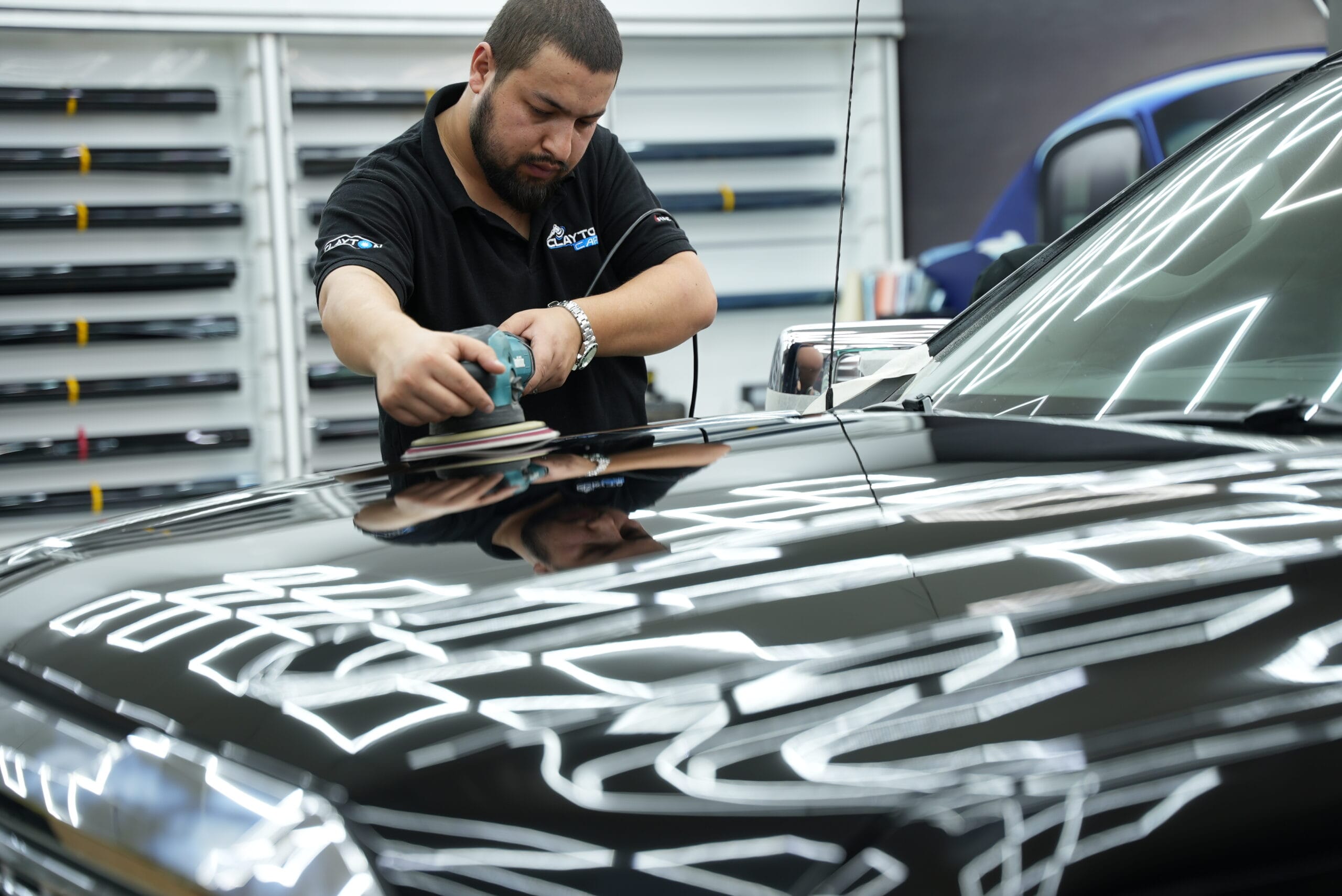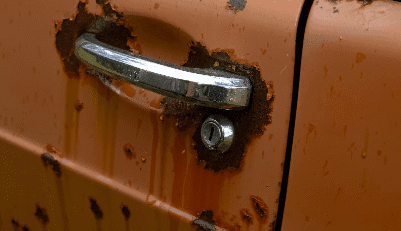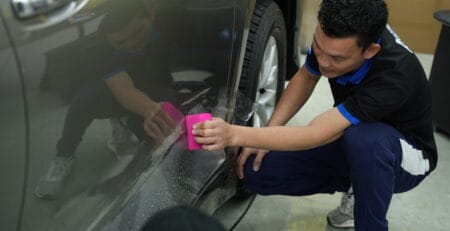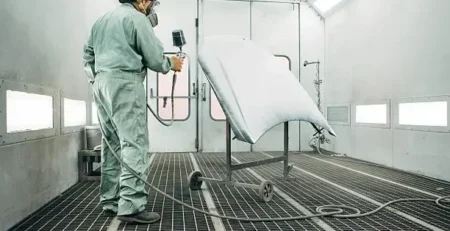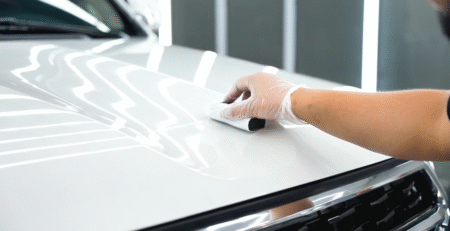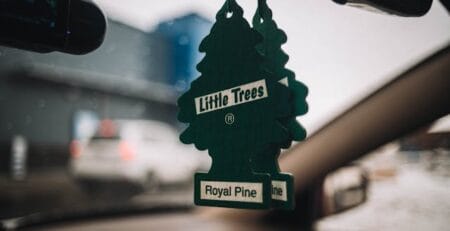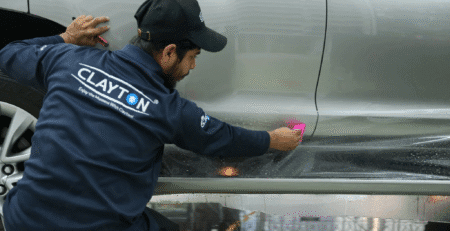The Ultimate Guide to Buffing Out Scratches on a Car
Clayton Care2025-06-24T12:50:45+00:00Ever spotted a scratch on your car and felt your heart sink?
Whether it happened in a parking lot or from a runaway shopping cart, scratches can mess with your car’s appearance and your mood.
But the good news is that you can buff out scratches on a car in many cases, especially if you catch them early and use the right approach.
In this guide, we’ll break down exactly how to buff out scratches on car, clean, and treat them, from light surface marks to those pesky deep scratches that may need more than just elbow grease.
What Kind of Scratch Are You Dealing With?
Before you grab a clean microfiber towel and start scrubbing, it’s important to figure out what kind of scratch you’re working with. Most cars have three layers of paint: a clear coat, a base coat, and the metal underneath. A scratch can affect just one or all of these.
Light scratches often only affect the clear coat and can usually be buffed out with a rubbing compound or toothpaste. A minor scratch that hasn’t broken through the paint can also be smoothed out fairly easily.
But if the scratch goes deep enough to expose bare metal, or if the jagged edges are visible and you can feel it with your fingernail, the damage may require professional scratch repair or even a trip to a body shop.
How to Buff Out Scratches on Car?
If you’re wondering how to buff scratches out of a car, the process usually starts with proper cleaning. Dirt, dust, and debris can make things worse if you rub them into the surface, so wash the scratched area with soapy water and dry it with a clean cloth before you begin.
Step 1: Assess and Clean the Area
Use your fingernail to gently feel the scratch. If your nail doesn’t catch, it’s likely just a surface issue. Rinse the area thoroughly to remove all dirt and contaminants. This ensures you’re working on a clean canvas.
Step 2: Apply the Right Product
You can use a scratch remover, rubbing compound, or even toothpaste (yes, really) for small scratches. Apply a small amount to a buffing pad or microfiber cloth, and begin working it into the affected area using light pressure and a circular motion.
Step 3: Buff and Polish
Once the product has been applied, continue to buff using a circular motion. Add a bit more pressure if the scratch is still visible, but avoid going overboard. You can finish with a polish to bring back the shine of your car’s finish.
For deeper marks, you may need touch up paint to restore the car paint, followed by clear coat for protection. Some people even use clear nail polish to cover small scratches temporarily, though it’s not a long-term fix.

Can You Buff Out Scratches On Cars That Are Deep?
Here’s where many people hit a wall. When the scratch cuts into the paintwork or exposes the metal, it might be too deep for simple DIY fixes. Still, there are steps you can take to minimize the appearance until you can get professional help.
Some try to fill the gap with paint, then buff the surface once it dries. Others turn to solutions like nail polish or touch-up kits, which can offer a short-term improvement in appearance.
But the truth is, for serious damage, the best results come from letting professionals take over. Even if you know exactly how to buff out scratches on a car, it would be best to trust experienced car detailers who can get the job done right.
In some cases, repainting your car after deep scratches might be necessary to restore its finish fully.
Should You DIY or Go to the Pros?
If you’re confident in your skills and dealing with small scratches, DIY methods can be surprisingly effective. All you need is the right product, a buffing pad, and a little time.
But if you’re dealing with more than a minor scratch, it may be time to call in a professional. DIY repair isn’t always ideal if the scratch reaches down to the base coat or metal. Attempting to fix it yourself without the right tools could make things worse.
Sometimes, even insurance companies get involved, especially if the scratch is part of a larger incident. Either way, it’s important to know when to stop and hand things over to an expert.
How to Prevent Scratches in the First Place?
Once you’ve worked hard to fix scratches, you’ll definitely want to keep new ones from forming. One of the simplest things you can do is wash your vehicle regularly using a soft clean cloth, and avoid automatic car washes with abrasive brushes.
Parking far from other cars, using a car cover, and getting regular detailing can also help maintain your car’s finish and reduce the risk of scratches.
If you’ve tried everything and the scratches are still there, or if you’d rather not risk damaging your paint, we’re here to help. At Clayton Care, we understand how frustrating it is to deal with visible blemishes on your car. Whether it’s a small surface mark or a scratch that’s gone all the way to the metal, our detailing team can restore your vehicle’s appearance with precision and care.
Don’t let scratches ruin the look of your ride. Book your appointment today and let Clayton Care handle the car scratch repair process with the professional touch your vehicle deserves. You can visit us at our center on Nad Al Hamar Road in Ras Al Khor Industrial Area, Dubai, call us at +971521454860, or head to clayton auto care to learn more.
Got Questions?
Frequently Asked Questions
How can I tell if a car scratch is too deep to remove scratches?
If your fingernail catches in the scratch or you can see exposed metal, it’s likely too deep for simple buffing. You’ll need professional repair to fully restore the paint.
Can I really use toothpaste to buff out scratches on a car?
Yes, for very light scratches on the clear coat, non-gel toothpaste can work as a mild abrasive to smooth out the surface. It’s a short-term fix, not a permanent one.
Will clear nail polish help with small scratches on car paint?
Clear nail polish can be used as a temporary seal to prevent rust or moisture from worsening the scratch. It’s not a true repair, but it helps protect the area.
What’s the difference between a rubbing compound and polish?
Rubbing compound is more abrasive and removes a thin layer of clear coat to smooth scratches. Polish enhances shine but doesn’t remove deeper imperfections. Both are often applied with a microfiber cloth using circular motions and moderate pressure.
Should I wash my car before using a scratch remover?
Absolutely. Washing removes debris and dirt that could cause more damage when you start buffing. Always work on a clean, dry surface.
